Intel’s 13th Gen desktop CPUs have already delivered impressive performance to beat their AMD counterparts, and now Intel is bringing Raptor Lake to its mobile processor lineup. Future gaming laptops will use the flagship Core i9-13980HX, while a range of more mainstream laptops can use the standard H-, P-, and U-series CPUs.
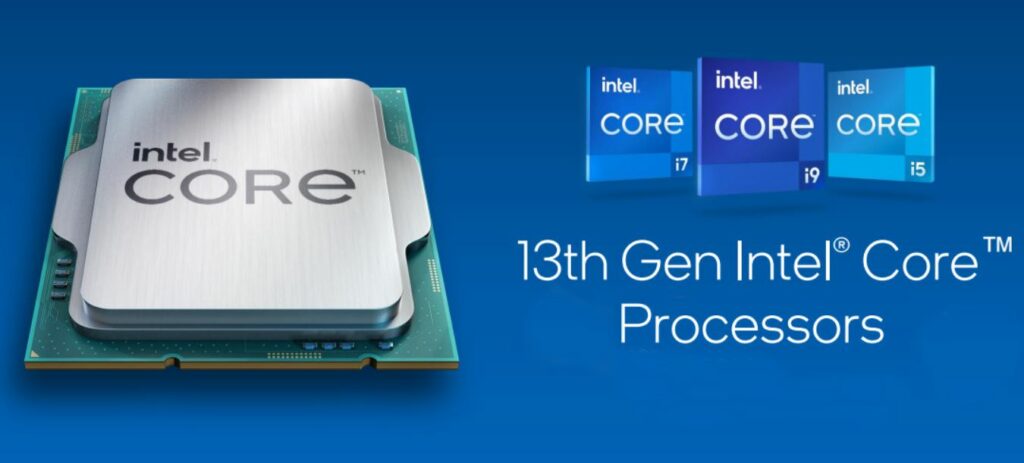
The highlight of the news is Intel’s Core i9-13980HX, which has 24 cores and a 5.6GHz turbo frequency. It is the first laptop CPU to enable a 24-core configuration, and according to Intel, it is the “fastest mobile processor in the world.”
Intel’s HX CPU line, which features eight performance cores and sixteen efficiency cores on the flagship Core i9-13980HX, is based on the same chip that the company used for their desktop 13th-generation processors. That is double the number of efficiency cores but the same amount of performance cores as the previous Core i9-12950HX. All of this is contained on a 55-watt chip that is meant to be used with the newest discrete mobile GPUs for gaming and high-performance workloads.
Up to 11% faster single-thread and up to 49% quicker multitasking performance than same 12th Gen CPUs. It is claimed that gaming performance will be up to 12 percent faster, but we won’t know how the performance gains will affect battery life until we thoroughly evaluate the CPUs.
Breaking down Architecture of Intel’s 13th Gen Mobile Processor
Its cutting-edge technology distinguishes it from both competitors and predecessors by enabling you to utilize the power of up to 24 cores. Bid farewell to the constraints imposed by outdated processors and welcome the boundless opportunities that lie ahead.
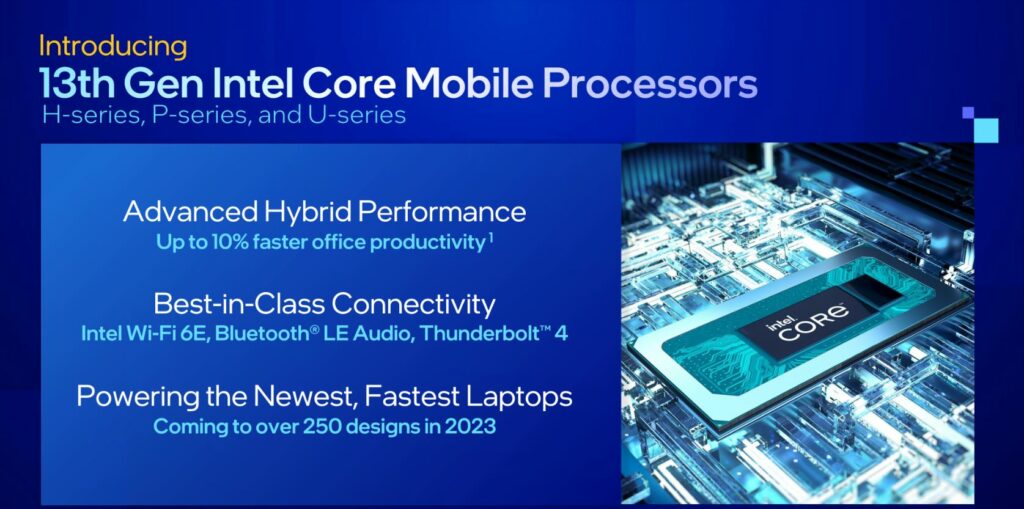
Intel’s increased performance architecture is powered by two types of cores:
1. Performance Cores (P-cores) are enormous powerhouses made to effortlessly manage tasks requiring a lot of resources. These P-cores, enhanced from the 12th Gen CPUs, guarantee smooth performance, giving unparalleled efficiency and lightning-fast execution. Which means whether you’re working on complex rendering tasks or lost in the engrossing world of gaming, no worries!
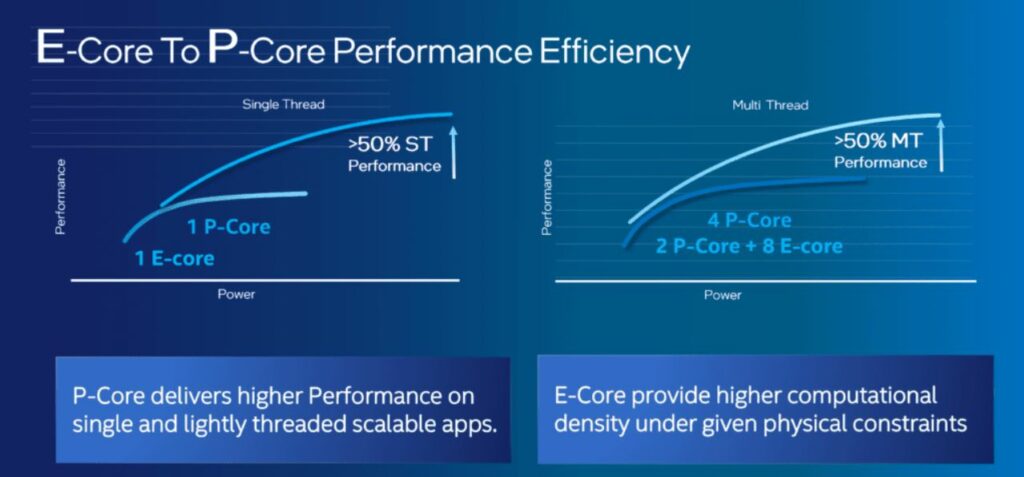
2. Efficiency Cores (E-cores): Your multi-threaded workloads and background tasks are managed by these unsung warriors. Despite their small size, they have a huge impact, guaranteeing maximum effectiveness and seamless multitasking. More E-cores than the previous generation are available in the 13th generation processors, improving multitasking performance.
Also Read: Windows 11 Update – Gets in the Ambit of Digital Markets Act
Sync Style Of This Gaming Beast
Bid farewell to the difficulties associated with handling P-cores and E-cores separately. Your life will be easier and more productive since your computing tasks will be effortlessly routed to the most suitable core. Thanks to the upgraded Intel Thread Director that is flawlessly incorporated into these CPUs 3.
This technology intelligently determines the best way to distribute tasks among P-cores. You can anticipate a notable increase in single-threaded performance as a result, enabling you to manage resource-intensive tasks with exceptional responsiveness. Whether you’re working on complicated programs or consumed in long gaming sessions, the Intel Thread Director guarantees an unparalleled degree of performance and efficiency.
DDR5 or DDr4? Choose the Best For You With Intel’s 13th Gen Mobile Processor
The 13th generation Intel Core Mobile CPUs provide you the flexibility to fully utilize the capabilities of the newest and most sophisticated DDR5 5600 MT/s memory. With support for DDR4 3200 MT/s memory, the 13th generation Intel Core Mobile processors provide you the freedom to choose the memory technology that best suits your needs. These processors are a great option for gamers looking for the best performance possible because of their capacity to give remarkable performance.
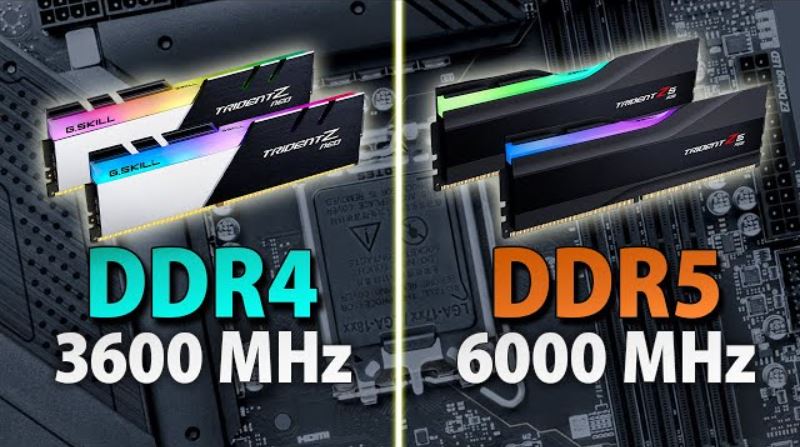
Furthermore, laptop manufacturers may now include DDR4 memory in their designs thanks to this range of processors, which lowers costs without sacrificing performance. This creates a plethora of opportunities for creative laptop setups that serve a broader audience. Additionally, it guarantees that all gamers, regardless of price range, can take advantage of the outstanding performance of the Intel’s 13th Gen Mobile Processor.
The Power of Multiple PCIe 5.0 and 4.0 Lanes Are Now Integrated
Redefining what’s possible, the 13th Gen Intel Core Mobile CPUs offer up to an amazing 16 lanes at your disposal. Additionally, these CPUs provide you with four CPU PCIe 4.0 lanes. Get ready for incredibly quick access to connections and storage, providing the best possible speed and efficiency for your computing operations.
That’s not all, though. The benefits of the most recent version of PCIe lanes go beyond speed. They completely transform your gaming experience by offering more fluid gameplay and increased efficiency. You can get god-level performance for all your gaming, streaming, and video creation demands with the 13th generation Intel Core Mobile processors.
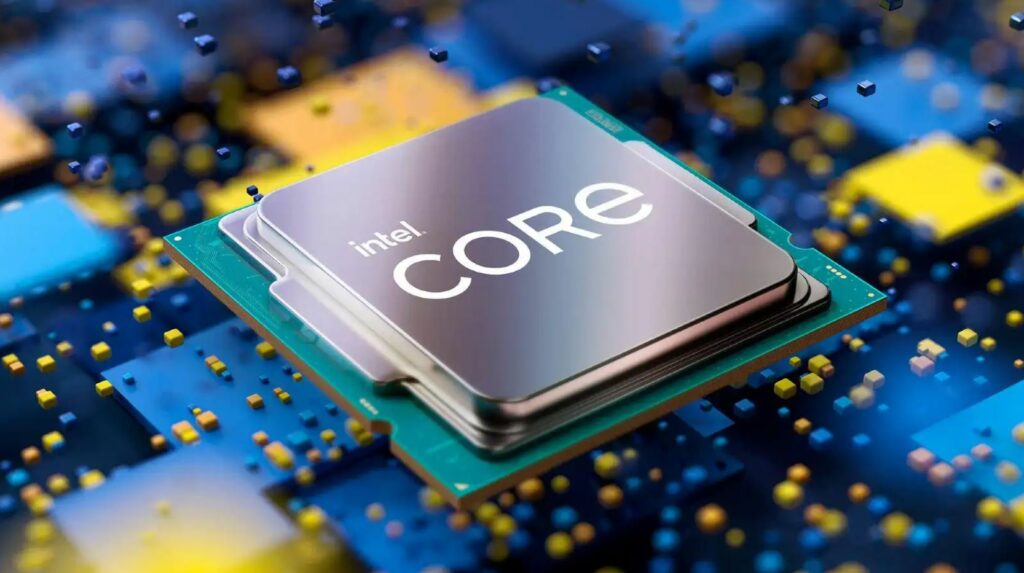
Faster data transfer speeds are another benefit of these lots of PCIe Gen 5 lanes, so your graphics cards and storage devices will perform at their best. As a result, annoying load times and sluggish performance are eliminated.
Intel Dynamic Power Sharing Feature for Peak Performance
Intel Dynamic Power Share is a revolutionary technology created especially to properly handle the critical issue of heat control. By smoothly transferring power between the discrete GPU and the Intel CPU, this ground-breaking capability enables your device to achieve unprecedented thermal performance.
Devices with 13th-generation Intel Core Mobile processors also come equipped with Intel Wi-Fi 6E (Gig+), a revolutionary advancement in network speed that will revolutionize how you connect and interact with the digital world. Slow connections are a thing of the past with Wi-Fi 6E; you’ll be able to access lightning-fast speeds. Thanks to the Gig+ speeds it offers, enjoy Wi-Fi that is three times faster than before.
Setting a new bar for wireless performance, Intel Wi-Fi 6E offers a staggering 40% increase in peak data compared to the standard 902.22ac 2×2 and dual spatial stream 802.11ac, respectively.
Intel Processor Nomenclature Explained
Example: Intel® Core™ i7 13700HX
- Intel® Core™: This is the brand name for Intel computer processors.
- i7: This modifier designates a particular series of Intel® CoreTM CPUs. Generally speaking, an i7 processor denotes a high-performance processor with cutting-edge features.
- 13700: This number denotes the processor generation. The numbers that come after the first digit are frequently upgrades or advancements over earlier iterations.
- HX: The Intel® CoreTM series processors’ capabilities are indicated by this suffix. HX, for instance, stands for “Highest performance, all SKUs unlocked” in this context.
That’s Not All You’ll Get! Here’s Some More
- 4 Thunderbolt-4TM ports are included with 13th generation Intel mobile CPUs. This implies that with just one wire to connect your device to a high-refresh gaming monitor with a 240Hz refresh rate, you can turn it into an immersive gaming station.
- Profit from ThunderboltTM 4’s enormous bandwidth, which provides a lightning-fast connection speed of 40 gigabits per second. You can easily store and play your favorite games straight from an external drive, opening up a world of possibilities for your gaming adventures.
- Complete overclocking capabilities are another characteristic of the 13th generation Intel HX processors. It lets customers increase the clock speeds and boost CPU performance.
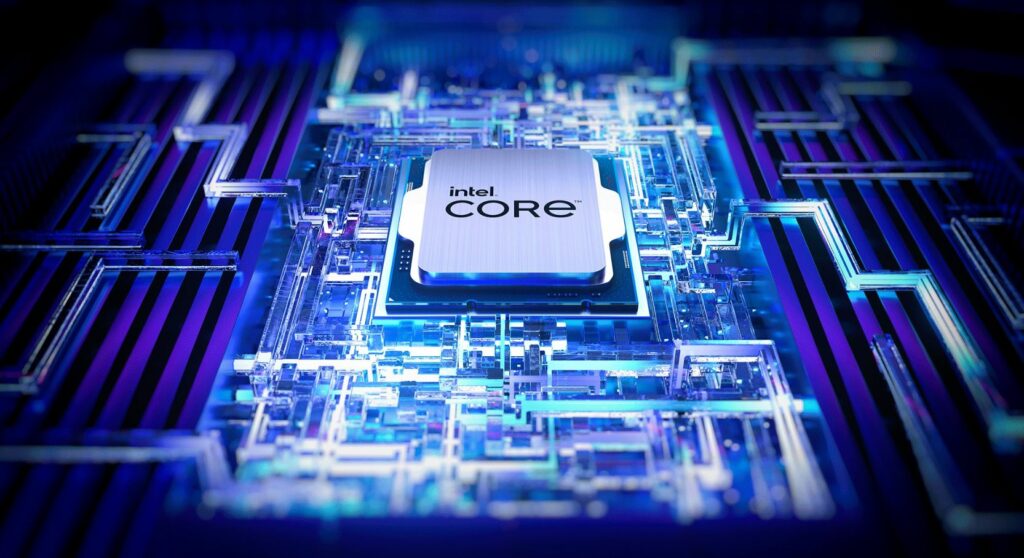
Dissecting Various Intel’s 13th Gen Core Processors
13th Gen i5:
Processors with up to 14 cores (6 P-cores and 8 E-cores) are found in 13th generation Intel Core i5 processors. Up to 20 processing threads are available to them (12 on P-cores and 8 on E-cores). The maximum turbo frequency of the CPUs is 4.7 GHz for P-cores and 3.6 GHz for E-cores.
13th Gen i7:
CPUs with up to 20 cores (8 P-cores and 12 E-cores) are found in 13th generation Intel Core i7 CPUs. Up to 28 processing threads are available to them (16 on P-cores and 12 on E-cores). The maximum turbo frequency of the CPUs is 5.3 GHz for P-cores and 3.8 GHz for E-cores.
13th Gen i9:
Processors with up to 24 cores (8 P-cores and 16 E-cores) are included in the 13th generation of Intel Core i9 processors. Up to 32 processor threads are available to them (16 on P-cores and 16 on E-cores). The maximum turbo frequency of the CPUs is 5.6 GHz for P-cores and 4.0 GHz for E-cores.
Here’s a List Of Laptops With Intel’s 13th Gen Mobile Processors
- Lenovo Legion Pro 5i
- Dell Alienware X16
- MSI Katana 15
- ASUS ROG Strix Scar 18 (2023)
- Acer Predator Helios Neo 16
- ASUS ROG Zephyrus M16 (2023)
Note that these are a few of the examples. Hence, the list is not exclusive.
Final Verdict
In conclusion, the 13th-Gen Intel Core Mobile Processors stand as the undisputed champions, delivering an unparalleled gaming experience. With groundbreaking performance and cutting-edge technology, these processors redefine what gamers can expect. It’s not just about power; it’s about entering a realm of gaming excellence. As we wrap up our exploration, it’s clear that the ultimate performance has a new name – 13th Gen Intel Core.
Continue Reading: Retro Mini PC for All your Needs In Compact Size